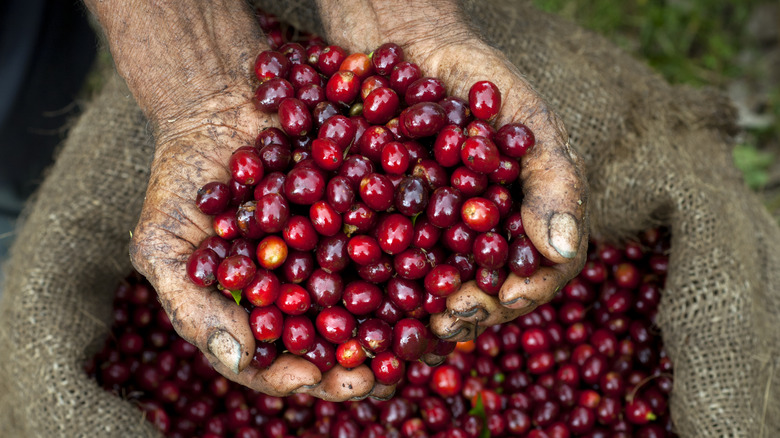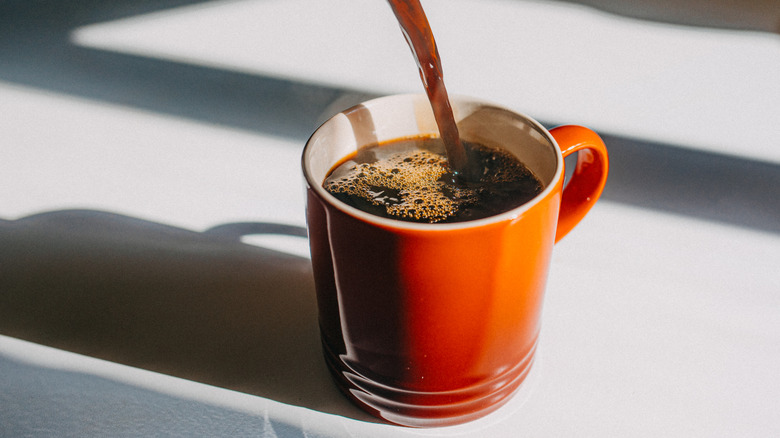Arabica Vs Robusta: The Difference Between The Most Common Coffee Species
Most people know how they like to take their coffee. (If you don't, here's how to order coffee as a total beginner.) You might be into strong espressos or milder lattes, for instance. But not everyone gives too much thought to their bean choice. And, yes, it does make a difference. If you want to take your relationship with coffee to the next level, you need to know about the two most common coffee bean species: arabica and robusta.
The difference between these two species lies in their origin, strength, taste, and ability to withstand diseases. Robusta comes from the central and western sub-Saharan African regions, and is grown in around 20 countries globally. This species can withstand warmer climates, meaning it can be grown in more places than arabica can. It's also more "robust," as it's less likely to be affected by diseases and pests. Arabica, on the other hand, is quite delicate. Native to Ethiopia, it thrives in mild, tropical climates like those near the equator. This picky species is more likely to be affected by diseases and is a bit harder to grow than robusta.
Some countries like Brazil (which is the country that produces the most coffee in the world) grow both species. Others specialize in one. For instance, Colombia only grows arabica. Of course, once roasted and ground, both coffees look the same. So, why should consumers care about which one they're drinking? The answer boils down to taste.
Which coffee species tastes better?
The coffee world tends to respect arabica more than robusta because it's usually of a higher quality. This is because arabica cherries are normally picked by hand rather than by a machine. This means subpar coffee cherries can be easily discarded. The opposite is true of robusta. As this type is often picked using a machine, it's common to get good and bad beans lumped together. This makes the overall quality of the coffee suffer. Of course, you can get bad arabica and good robusta, but overall, arabica is viewed as the superior choice. After all, there's a reason why almost any instant coffee you buy is going to be made with robusta; producers aren't going to waste their time picking arabica cherries by hand only to have them made into a coffee product that is better suited for baking than it is drinking.
In terms of taste, many coffee connoisseurs prefer the sweeter, high-acidity profile of arabica. This species is usually described as "fruity" or "floral." For these reasons, those who like a more intricate and subtle taste generally buy arabica beans even though they tend to be more expensive than robusta. With a flavor profile that is more intense, robusta is good for those who like harsher coffee. What's more, those who like their coffee strong tend to prefer robusta as it generally contains more caffeine than arabica. If this is you, rejoice in knowing you're getting more caffeine in your cup, and are paying lower prices for it, when you choose robusta.

